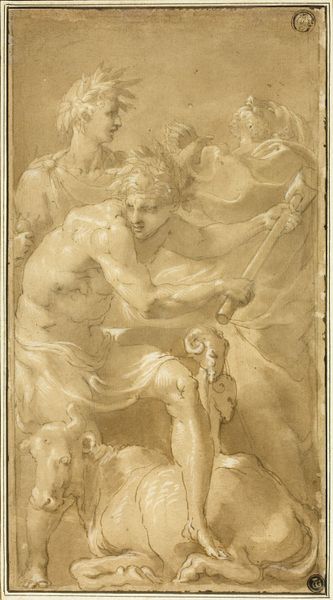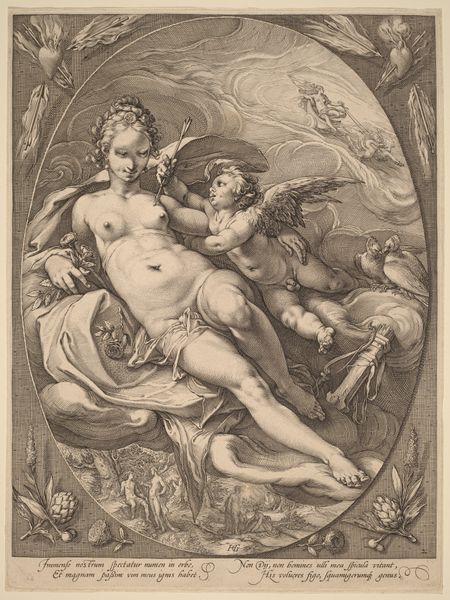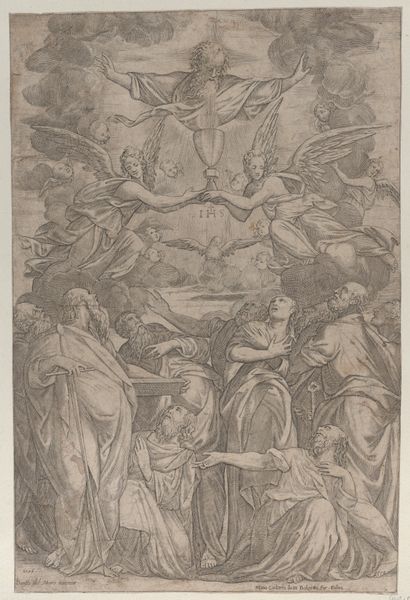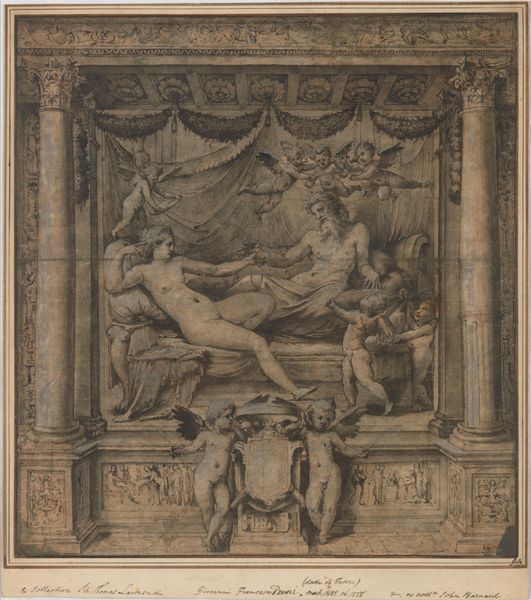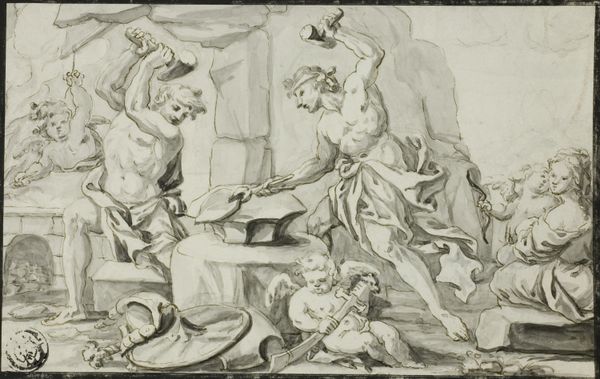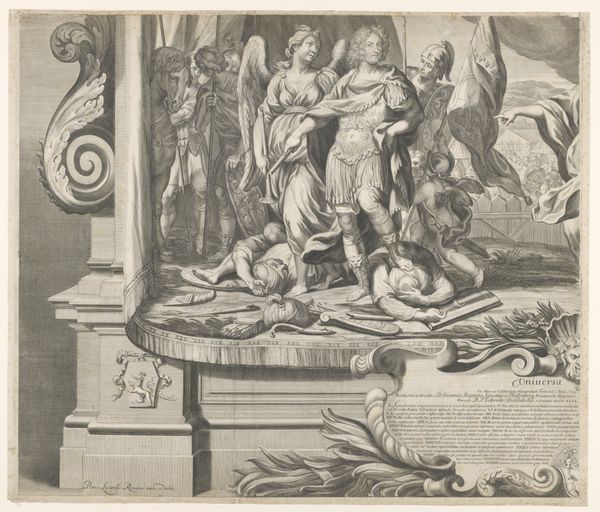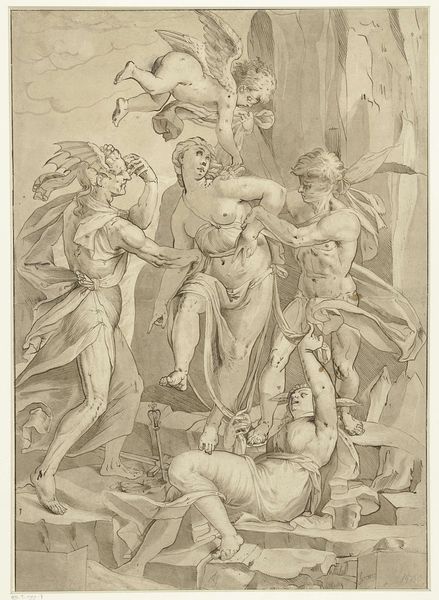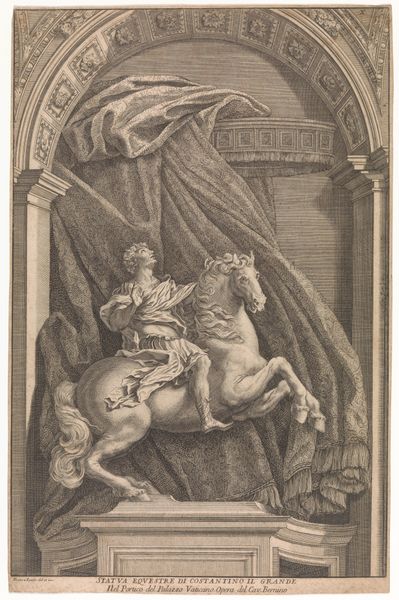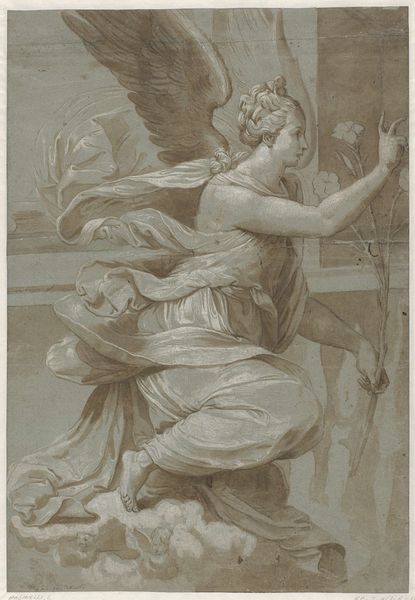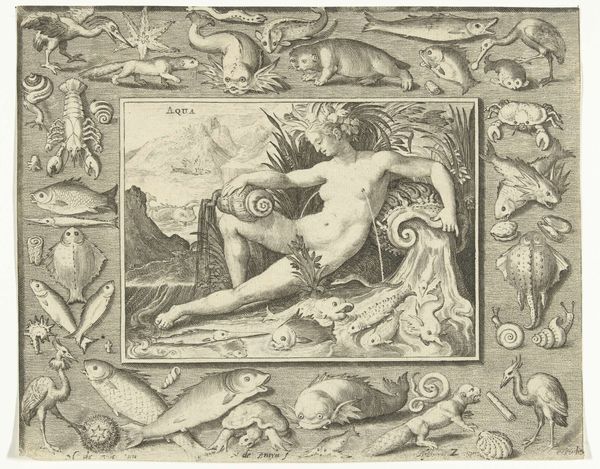
relief, sculpture
#
allegory
#
baroque
#
sculpture
#
relief
#
figuration
#
form
#
sculpture
#
history-painting
Dimensions: height 288 cm, width 152 cm
Copyright: Rijks Museum: Open Domain
Curator: Let's discuss this intriguing relief, Allegory of Fame, created by Gerard de Lairesse between 1675 and 1683. Editor: My first impression is of a hushed monumentality, softened by an almost dreamlike rendering of figures and textures. It feels delicate for a sculpture, or is it supposed to look this way? Curator: The effect is intentional, yes. De Lairesse operated within a specific cultural framework, promoting classicism and history painting as the apex of artistic achievement. Consider how this work visually champions fame and glory, ideals deeply embedded in the cultural fabric of the era. Editor: Right, but how was it made? The Rijksmuseum classifies it as a relief sculpture, but what kind of stone are we talking about, and who were the craftsmen involved? I am captivated by the layering, particularly how the bodies emerge seamlessly from what seems like a continuous slab. Curator: The selection of this type of light, fine-grained stone lends itself to such a soft surface and makes these techniques viable. More so, in its initial location it acted as a symbol of refined taste. Editor: Absolutely. I'm also thinking about the implications of producing allegorical works. How did its creation impact the lives of the workshop, what resources were required, and ultimately, who was consuming such representations of power? Curator: It’s a crucial point, isn’t it? De Lairesse, given his prominence, likely commanded a team of skilled artisans. Their labor, mediated through his design, resulted in an object that reinforced the status quo. Editor: There's something so revealing in how it elevates classical ideals but relies on the tangible skill and toil of often-unseen hands. The mythology almost becomes secondary to the process of its creation. Curator: Precisely. "Allegory of Fame" exists not merely as an artistic statement but as a material manifestation of societal structures and the values they uphold. Editor: Analyzing its process and the environment around its creation opens up the chance to engage with so much more than just the image. Thanks! Curator: Indeed, understanding that dialogue between the socio-political forces and artistic labor reveals deeper insights.
Comments
No comments
Be the first to comment and join the conversation on the ultimate creative platform.
